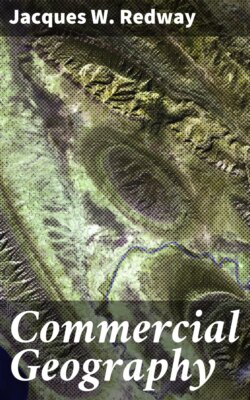Читать книгу Commercial Geography - Jacques W. Redway - Страница 3
PREFACE
ОглавлениеThe quiet industrial struggle through which the United States passed during the last decade of the nineteenth century cannot fail to impress the student of political economy with the fact that commercial revolution is a normal result of industrial evolution. Within a period of twenty-five years the transportation of commodities has grown to be not only a science, but a power in the betterment of civil and political life as well; and the world, which in the time of M. Jules Verne was eighty days wide, is now scarcely forty.
The invention of the Bessemer process for making steel was intended primarily to give the railway-operator a track that should be free from the defects of the soft, wrought-iron rail; in fact, however, it created new industrial centres all over the world and brought Asia and Africa under commercial conquest. The possibilities of increased trade between the Atlantic seaboard and the Pacific Coast States led to the building of the Northern Pacific and Great Northern Railways. But when these were thoroughly organized, there unexpectedly resulted a new trade-route that already is drawing traffic away from the Suez Canal and landing it at Asian shores by way of the ports of Puget Sound. It is a repetition of the adjustment that occurred when the opening of the Cape route to India transferred the trade that had gathered about Venice and Genoa to the shores of the North and Baltic Seas.
In other words, a new order of things has come about, and the world and the people therein are readjusting themselves to the requirements made upon them by commerce. And so at the beginning of a new century, civilized man is drawing upon all the rest of the world to satisfy his wants, and giving to all the world in return; he is civilized because of this interchange and not in spite of it.
The necessity for instruction in a subject that pertains so closely to the welfare of a people is apparent, and an apology for presenting this manual is needless. Moreover, it should not interfere in any way with the regular course in geography; indeed, more comprehensive work in the latter is becoming imperative, and it should be enriched rather than curtailed.
In the preparation of the work, I wish to express my appreciation of the great assistance of Principal Myron T. Pritchard, Edward Everett School, Boston, Mass. I am also much indebted to the map-engraving department of Messrs. The Matthews-Northrup Company, Buffalo, N.Y.
J.W.R.
